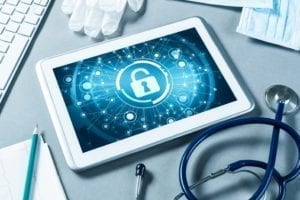In November 2015, when Tamil areas of southwestern India suffered from serious monsoon-related flooding that killed hundreds and caused the major city Chennai to essentially shut down for a week, local residents asked for help from an unusual source: HealthTap, the online service that offers medical advice and concierge care. This article explains the unique technical and organizational resources HealthTap offered, making it a valuable source of information for anyone in the disaster area with a cell phone or Internet access. At the end I will ask: what can public health institutions do to replicate HealthTap’s success in aiding the people of Chennai?
Disaster response from an unusual quarter
HealthTap, an online service connecting doctors and patients, has grown gradually but steadily in scope over the five years since its launch. It began by providing personalized answers, directly from practicing doctors, to individuals dealing with routine health issues such as pregnancy. HealthTap supported an ever-growing library of answers and continually added new services, leading to a concierge service. It expanded its services for doctors as well, providing easy consultations and discussion forums. It added a corporate (B-to-B) service that companies could offer to all their employees. And now, generalizing from their experience in Chennai, they have launched HealthTap SOS for disaster relief.
The Chennai intervention was requested by one of HealthTap’s clients, a company called Flex that had some employees in Chennai. When HealthTap started looking around for doctors in its network who had flood-related expertise, it turned up so much useful help that even the HealthTap leadership was surprised. CEO Ron Gutman explained to me that many doctors grew up in India, perhaps even got their degrees and practiced there, then moved to the US and joined HealthTap’s network. They are now able to help their country and local communities without actually traveling back.
HealthTap then discovered that their 85,000 doctors, located primarily in the United States, have come from 101 countries. Many languages are spoken, and many doctors intimately understand the cultures of other countries, as well as the medical conditions and disaster-related problems faced in them. HealthTap even organized psychiatrists and psychologists to advise and calm residents in the disaster area.
The organizational and technical elements of marshalling expertise
Public health and disaster agencies have networks of experts too, of course. But Gutman explained that these institutions can’t maintain a network as large and diverse as HealthTap just to prepare for occasional disasters. HealthTap’s strength is that it can redeploy a network developed to handle everyday medical conditions and turn it into a resource for communities struck by flooding or other disasters.
Doing so depends on the generosity and humane response of the doctors, of course, but it also requires a detailed understanding of the expertise offered by each of the 85,000 doctors in the network. According to HealthTap, they obtained crucial information on disaster recovery through crowdsourcing: they reached out to their network and asked the doctors to provide tips and checklists for managing during disaster situations. This turned up an abundance of information and offers to help.
Thus, HealthTap exemplifies the highly connected, intelligent expert network described in Beth Simone Noveck’s book Smart Citizens, Smarter State: The Technologies of Expertise and the Future of Governing. Such a network is more than a loose association of people in a given discipline: it is highly structured using details provided by individuals about themselves, or information collected from routine interactions.
In addition to this information-rich database of physicians, HealthTap has developed another technical advantage–once again, a set of tools they developed rigorously over time to facilitate routine care, but that also proves invaluable in emergencies. Their sophisticated search service can turn up information quickly that is relevant to the person logged into the system, based on information that the person reveals about himself or herself. HealthTap’s rating system (similar to those used on travel sites or other crowdsourced recommendation systems) brings up the best information out of millions of potential answers in their database. Although most of the Chennai residents asking for help found answers quickly in HealthTap’s database, HealthTap can also connect a person quickly with a clinician for one-to-one service. Because of the immense value of personalization, HealthTap suggests that public health workers set up an account with HealthTap before emergencies develop (an account they offer for a very modest charge).
General lessons
HealthTap did a great thing in Chennai, and their SOS service promises to be widely useful, especially in a world increasingly hit by climate change. But a private company such as HealthTap shouldn’t be the only institution with these resources for public health. Public agencies should take a leaf from Noveck’s book to set up expert networks with background on potentially useful experts.
Public health agencies already offer information during emergencies over the phone, broadcast media (do you ever hear “The following is just a test” announcements on the radio?), and popular information dissemination networks such as Twitter, but they could collect more information (voluntarily) from residents and allow them to connect to experts to answer specific questions when there is a need. For instance, if you depend on a medication and are running low in the aftermath of a major storm, you could find out from a specialist how to cope without it.
Technology and modern social organization offer a lot of tools to help the world deal with emergencies. Consider the well-known Ushahidi service, created in 2008 to coordinate input from local residents suffering from political violence and now used in a variety of situations. OpenStreetMap has also served disaster relief, used as resource along with Ushahidi during the 2010 Haiti earthquake. Public health agencies can learn from organizations such as these, along with HealthTap, to save lives.













